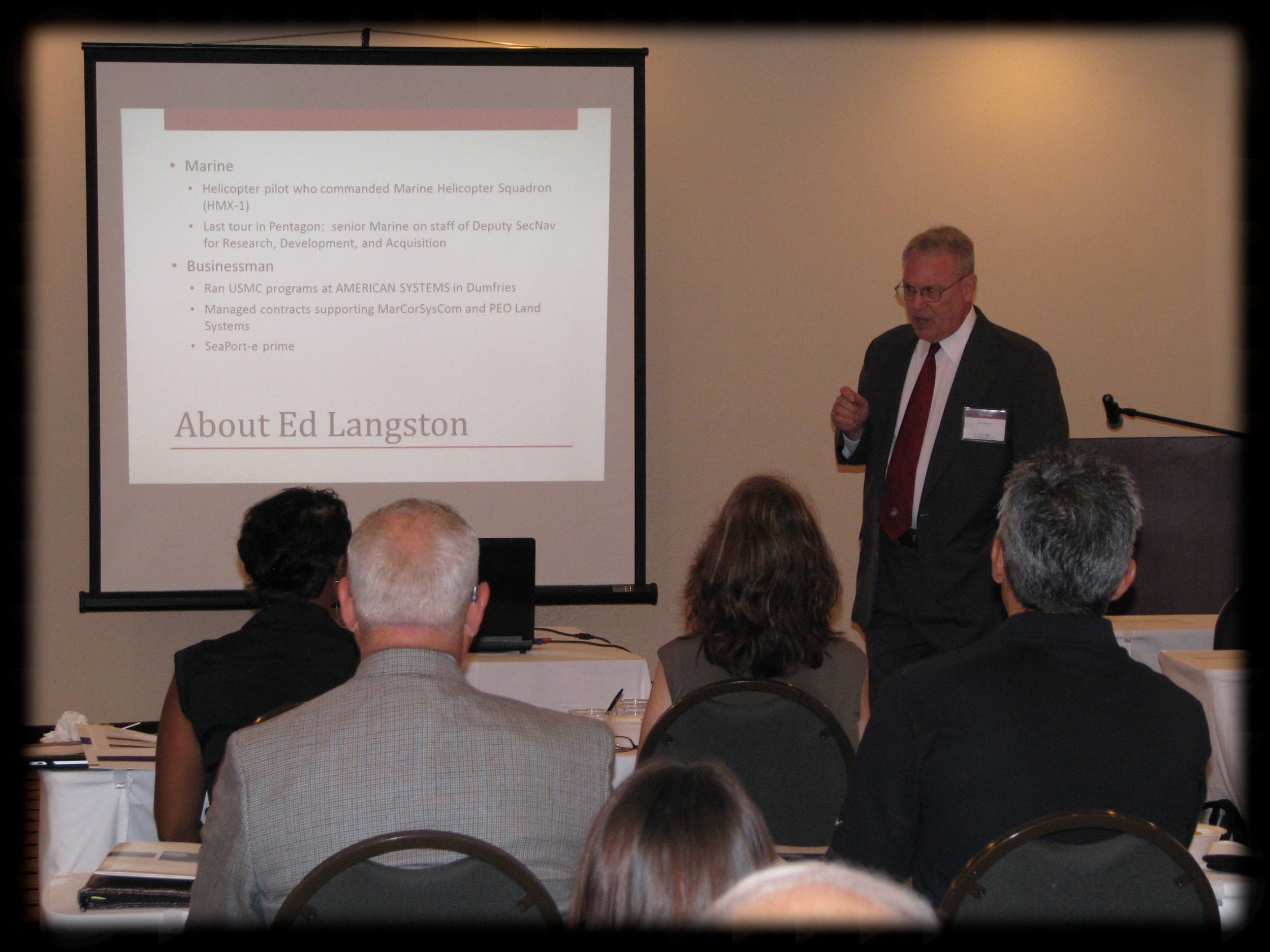As a prime or sub contract holder on the Seaport-e vehicle, you receive numerous Event Invitations from the Seaport-e bid administrator every day. How can you most efficiently assess these e-mails for business opportunities without spending countless business development resources on the portal, reading each and every RFP?
I routinely “rack and stack” these invitations for several different clients across a broad range of capabilities, business sizes, and Seaport-e zones. Using the following process, it takes between 10 seconds and 3 minutes to assess an event for possible action. These are the steps and decision gates I use to determine if an event invitation represents a genuine opportunity for a client.
Depending on the contracting command, and even the event creator, the event invitations will contain varying amounts of information. There are times you will have to login to the portal and open the attachments to the event to accurately determine applicability to your company.
I start with the e-mail. The recent announcement below is an excellent example of a well-done event invitation. All the information you need is contained.
* Category: SeaPort Enhanced
* Name: N00024-09-R-3232:1
* Description: Missile/All Up Round (AUR) Integration Engineering, Technical and ILS Services (Zone 6, SB Set-Aside) Requiring Activity: Port Hueneme Division, Naval Surface Warfare Center, Port Hueneme, California Period of Performance: Three (3) Years Anticipated Award Date: 2 June 2009
Incumbent: Basic Engineering Concepts & Technologies, Inc.
Contract Number: N63394-03-D-1153
* Start Time: 3/17/2009 5:00:00 PM (GMT-08:00) Pacific Time (US & Canada)
* Stop Time: 4/2/2009 2:00:00 PM (GMT-08:00) Pacific Time (US & Canada)
* Creator: Nelson F. Nailat (nelson.nailat@navy.mil)
* Contract Negotiator: Nelson F. Nailat (nelson.nailat@navy.mil)
* Contracting Officer: Kittie S. Ellison (cathleen.ellison@navy.mil)
* Zone: 6 - Southwest Zone
* Set Aside: SB
Reading from the top, Category is either Seaport or Seaport Enhanced, depending on the contract vehicle. You will know which one you have.
Name:
The name of the event is a combination of letters and numbers that uniquely identifies the task order opportunity. The “N” means Navy and the next five numbers represent the Navy Unit Identification Code, or contracting command from which the event is issued. You can look up Navy UIC’s here. The next two-digit number is the year, and the “R” means this is a “Request for Proposal.” The last sequence of numbers is the unique sequential identifier for the event. A trailing “:#” represents an iteration or amendment to a previously-issued event.
The name field may read “sources sought” or “advance notice” if the RFP has not yet been finalized.
“Sources sought” is a market research tool used to help the government determine the competitive environment for a particular requirement. A “sources sought” invitation is an opportunity for you to inform the government of your firm’s capability to perform the work described. If the government determines there is a sufficient competitive environment, the work may be set-aside for a small or disadvantaged business.
An "advance notice" is the announcement of the government’s intent to compete the work. An "advance notice" may or may not request industry comments on the Statement of Work (SOW) or Performance Based Work Statement (PBWS).
Description:
The description of the event is one sentence to one paragraph about the work being competed. As in the example above, it may contain the type of work, the program office or agency for which the work is to be performed, the zone in which the work will be performed, information about the incumbent, the period of performance, level of effort, and other information to help in your assessment.
More often, the description field will contain only a program office or agency, and the type of work.
Decision gate #1: if it’s not in your wheelhouse, it’s a no-bid.
Start Time: is the day the invitation was created.
Stop Time: is the date and time the proposal or response is due.
Stop Time can be your biggest clue in determining if a competitive environment exists. Often, the stop time alone will determine the bid/no-bid decision for your company if you don’t have sufficient resources to develop a competitive response by the due date.
A short suspense doesn’t necessarily mean the competition is “wired” for another company, though it certainly does give the incumbent an advantage. It some cases it simply means the government was slow in getting the requirement written and through legal review and contracts process ahead of the original contract’s expiration date.
Decision gate #2: If you don’t have the time to prepare a cogent and competitive response (I recommend a MINIMUM of 14 days) it’s a no-bid.
The Creator, Contract Negotiator, and Contracting Officer are listed in the next three items.
Zone:
Zone is the Zone in which the work will be performed or contracted. You must be a prime contract holder in that Zone to submit a proposal to prime the opportunity.
Set-aside:
Set-aside will tell you if the work is full and open (unrestricted), small business, or a subset of small business, such as Small Disabled Veteran Owned Business (SDVOB) or 8(a).
Note: if the work is previously unrestricted, or has been performed by a small business that may have graduated during the period of performance, and is now being set-aside for a small business, chances are the incumbent will be looking for a team member in that class to recomplete the work. Although teaming agreements are often in place long before the RFP is issued, this can represent an opportunity to team with the incumbent, or a likely competitor, to compete for the work.
Decision gate #3: If you don’t qualify to prime the work, do you have time and resources to get on a team? If no, this is a no-bid.
After evaluating the e-mail, if I find there is either sufficient information to warrant looking into the opportunity, or not enough information to make a determination, I login to the Seaport-e portal to investigate further.
Once in the portal, the first thing I look at is the number of event attachments and the type. A well-prepared RFP will contain forms and worksheets to be submitted with the proposal, and all the reference information you will need to adequately respond. These documents can decrease your time investment in preparing a response, and that factor can be weighed against a short suspense to sway your bid/no-bid decision.
Note: A “poorly” written or rushed RFP can cause no end of headache in the proposal process. Often the only bid attachment will be the RFP itself, leaving your proposal team to interpret sections L&M to determine what is an adequate response, and to develop attachments and worksheets independent of specific guidance. Often, amendments will be issued until the due date of the response. This is time-consuming, confusing and frustrating, and is unfortunately often the reality of doing business with certain commands. The decision to submit a response to such a poorly written RFP needs to be made carefully. You may be able to gain clarity through carefully-worded questions submitted through the portal, keeping in mind every other contractor will have access to your questions and the government’s response.
My next stop in the portal is the Q&A, even before I open the RFP. Often, the information I am looking for has been asked by other contractors, and the answers will save me valuable time reading the RFP.
Decision gate #4: a long list of questions that indicate a poorly-written RFP, weighted against time to respond and relevancy of capabilities against requirements: this is either a “no-bid”, or a “no-bid as-is” but “track” for amendments and possible extensions.
My last stop is actually reading the RFP. I get that far in roughly 20% of event notices. I skim the introduction and background (which may contain a reference to the incumbent), and I look for information on the level of effort.
At any of these decision gates, I may pass the opportunity over to a client with expertise in the work to make a determination whether to add it to their pipeline. The client may then throw it back over to me for a thorough evaluation of the RFP and a bid/no-bid recommendation. That evaluation process, including an analysis of the competitive environment, will be the subject of future articles.
The foregoing should provide some clarity and save you valuable time as you sort through the deluge of Bid Announcements streaming from the Seaport-e portal to make your decisions about which ones to pursue. I wish you the best of luck in your efforts!
Copyright Iona Moon 2009



